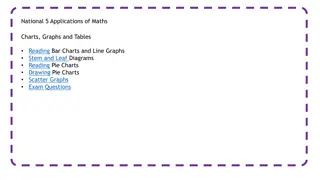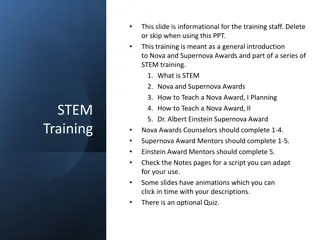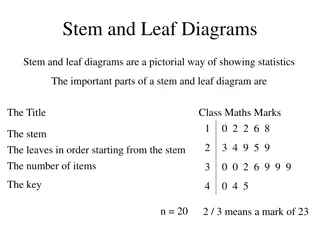Exploring Spaghetti Diagrams in STEM Education for Grades K-5
Dive into the world of Spaghetti Diagrams through industrial engineering concepts taught in a Toyota Production Systems Lab for students in Grades K-5. Understand the flow of movement in spaces like houses, learn to create spaghetti diagrams, and discover how they can be applied to rearrange rooms and optimize paths. Visual examples and practical exercises make learning engaging and interactive.
Download Presentation

Please find below an Image/Link to download the presentation.
The content on the website is provided AS IS for your information and personal use only. It may not be sold, licensed, or shared on other websites without obtaining consent from the author. Download presentation by click this link. If you encounter any issues during the download, it is possible that the publisher has removed the file from their server.
E N D
Presentation Transcript
Spaghetti Diagram STEM and Industrial Engineering Toyota Production Systems Lab Facilities: Grades K-5
| 3 Think about your house How many rooms does it have? Where are the doors? Is there large furniture like beds and TVs? These are all questions that you need to know to create a spaghetti diagram!
| 4 This house has 5 rooms. Can you spot all four plants? How many doors are there?
| 5 What is flow? When people walk around in their house, at the grocery store, or at a park Think about a lunchline and how people walk on the same path Point B Point A
| 6 Slide Time!
| 7 Bike Time!
| 8 Billy can take multiple paths to the bike Path 1 (In Red) is shorter Path 2 (In Pink) takes a longer time
| 9 Since Billy took the shorter path he got to the bike sooner!
| 10 What is a Spaghetti Diagram? They show us the path we take when we move around! You can use them to rearrange how a room looks, or even move entire rooms around! It looks just like spaghetti!
| 11 The footsteps show the path from one bedroom to the bathroom
| 12 This shows the path from the other bedroom to the bathroom
| 13 The spaghetti diagram shows how much longer the blue path is than the red one
| 14 You can add as many paths as you want! The more lines you have the more it looks like Spaghetti! Each line has its own point A and B Yellow goes from the Kitchen to the Table
| 15 Activity for today!
| 16 How to use a spaghetti diagram Ask yourself: Where are the longest lines? Ask yourself: How can you make them shorter? Move objects around to make the lines shorter!
| 17 Let s make our own! 1. Grab a piece of paper and draw the rooms in your house 2. Think of paths you take in your house, for example going to the kitchen, going to watch TV, and other activities.
| 18 Drawing our lines! 1. Get up and walk to a few places around your house and count how many steps it takes to get there! Draw the lines on your paper and write how many steps it took! 2. Take a look at the longest lines. How can you make them shorter? What will happen to the lines that are already short?
| 19 Rearrange our house Draw your house again but put the rooms you use a lot closer together. If you draw the lines again, they ll be a lot shorter!
| 20 What did we learn? Moving furniture or rooms around can save a lot of steps. This can save a lot of time! Spaghetti diagrams help us see how we can get rid of steps by making our long lines shorter.
| 21 Thank you!























